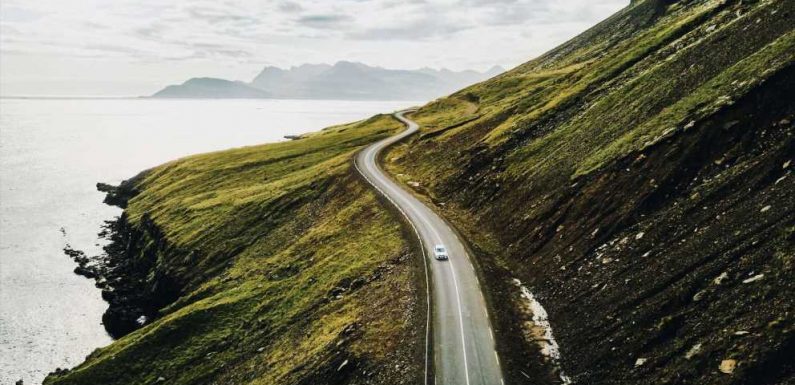
Iceland has a New Year’s resolution. After a 10-month pause in tourism due to global lockdowns, the country is preparing for a new era of outdoor adventure—one that locals are hoping is more sustainable than before.
The Nordic island nation’s meteoric rise in popularity remains a controversial topic. Once named the fastest-growing destination in Europe, its economy has become reliant on flashpackers keen to marvel at glaciers, geysers, and green-streaked skies. But environmentalists have raised concerns about the impact of overtourism on delicate ecosystems. Iceland’s answer? Encourage people to stay longer, travel slower, and make use of the country’s greatest asset in a COVID-minded world: space.
Similar to other hot-ticket destinations like Venice and Amsterdam, which celebrated reduced pollution in 2020, Iceland experienced its own silver linings in a year of fewer visitors. Thingvellir National Park director Einar Sæmundsen noticed less litter on trails that were previously trampled by hikers. Meanwhile, locals enjoyed the quietude, with domestic travelers flocking to beloved sites, as well as the Westfjords and Eastfjords—two lesser-explored regions that are finally getting the attention and financial support from the Icelandic government to thrive.
“The growth we saw in the number of visitors up to 2019 was far too rapid and we were getting close to the edge of seriously unsustainable development,” says Tryggvi Felixson, a tour guide and Chair of Landvernd, the Icelandic Environment Association. “We are fortunate that Iceland is a relatively big country. It’s possible to distribute the traffic more evenly than we have done before.”
More funding for infrastructure and conservation
Unlike destinations that tightened budgets in 2020, Iceland increased its spending on tourism by 40 percent. A substantial amount of the $1.73 billion ISK ($13.6 million) budget was used to improve infrastructure at tourist sites. Many of these places, like the basalt column-flanked canyon of Stuðlagil, became famous due to social media. The government is finally playing catch-up to build necessities like restrooms, parking lots, designated trails, and wheelchair-accessible entrances.
“It’s been challenging to stay ahead of social media,” says Skarphéðinn Berg Steinarsson, Director General of the Icelandic Tourist Board. “Visitors like to go around wherever they want and that’s how we want to keep it. But we are sometimes unprepared for the sites they’re visiting. Many of these places are much more delicate during the winter and spring when the frost is leaving the soil. A lot of traffic can spoil the environment.”
Iceland’s parliament is also now debating a proposal to establish a national park in the Highlands, which will cover and protect about 30 percent of the country, says Felixson.
A push for longer stays, alternative routes, and remote accommodations
Inexpensive flights once made Iceland a magnet for weekend jaunts, but with COVID-19, longer trips that include working remotely are becoming the norm. In November, Iceland announced a new visa for international remote workers. Foreign nationals, including Americans, are now eligible to stay in Iceland for up to six months, as long as they are employed with a company or can verify self-employment. Unlike other visas aimed at digital nomads, Iceland’s program has some important fine print. Your monthly salary must be at least 1 million ISK ($7,360) or about $88,000 per year to qualify.
The quality-over-quantity strategy is simple: attract high-earning professionals that can help stimulate the local economy without leading to overcrowding. The new visa program is just one aspect of Iceland’s shift toward attracting those craving a slower style of exploration.
“Not everyone has to drive the Ring Road,” says Steinarsson. “We’re encouraging people to travel around the country but, preferably, stay longer in each region.”
Offering alternatives to Route 1, which follows the circumference of the island, Iceland opened two new circuits in late 2020. One is the Westfjords Way, a 590-mile journey around the Westfjords peninsula, which was previously closed in the winter due to avalanche risks. The second new route is the Diamond Circle in North Iceland, a 155-mile circuit replete with waterfalls and wildlife.
But that isn’t to say the capital should be completely overlooked. This spring, new geothermal spa The Sky Lagoon is set to open in Reykjavik. The project is one of the biggest in Icelandic tourism’s history at 4 billion ISK ($31 million). With its 260-foot oceanfront infinity pool and architecture inspired by the region’s traditional turf-houses, it could be an attractive alternative to the famous Blue Lagoon.
For those who want to experience nature away from the crowds, the newly launched Bubble Hotel offers the chance to sleep under the Northern Lights in one of 18 clear dome structures located in two remote forest locations. Meanwhile, close to Europe’s largest glacier in Vatnajökull National Park, the new Six Senses Össurá Valley is set to open in 2022. With 70 rooms and private cottages sprawled across 4,000 acres and built using renewable materials, the property will usher in a new option for sustainable luxury.
Conserving the environment while continuing to grow economically remains a challenge. But perhaps the forced pause has led to more than just a rebirth of quiet and clean trails. This time—with more remote adventures and better infrastructure—the land of ice and fire will be ready.
Source: Read Full Article










